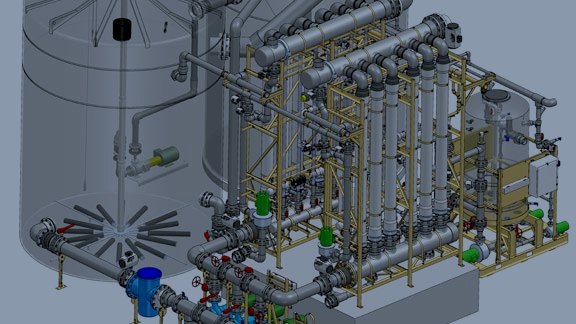
Nitrogen Removal
The biological nutrient removal (BNR) of nitrogen from wastewater in activated sludge is a three step process: Ammonification, Nitrification, and Denitrification. These processes require specific conditions in the activated sludge to occur, and an MBR is better able to achieve and maintain those conditions than other systems.
Nitrification
NW’s MBR system is designed to operate under varying MLSS concentrations. This means the solids retention time (SRT ) of the system can be easily changed by altering the concentration of mixed liquor. Sufficient SRT is one of the most important factors needed to promote the growth of nitrifying bacteria, and a system that allows the operator the flexibility to dial in the right SRT performs better than those that don’t. Conventional treatment systems depend on the settleability of the sludge, which limits the concentration of mixed liquor to a lower range.
We also provides pH control in its MBR systems. This automatically manages the alkalinity of the system to ensure that nitrifiers have the alkalinity required to carry out the nitrification reaction. Automatic control of the entire process including alkalinity ensures consistent reliable nitrification.
Denitrification
NW uses ORP control to monitor and control anoxic conditions in anoxic zones. The ORP should be below 50 milivolts in order to consistently carry out denitrification. When the ORP increases due to underloading or other factors, the system adds supplemental carbon to keep the ORP in the denitrifying range. This ensures that nitrates entering anoxic zones will be treated. Again, automatic control of the system keeps the right condition to maintain consistent high quality effluent.
Colloidal Nitrogen
Small particulate nitrogen such as colloidal unbiodegradable TKN is not removed from conventional systems. These colloidal particles and small amount of biosolids going over the weir add to the overall effluent nitrogen. NW’s MBR systems use 0.03 micron ultrafiltration that removes all colloidal particles.
Phosphorus Removal
The removal of phosphorus can occur either biologically or by the addition of coagulants. If biological phosphorus is employed, the system typically still uses coagulant addition. The ultrafiltration membranes that NW uses in its MBR systems remove even the smallest colloidal particles of phosphorus allowing systems to achieve effluents containing less that 0.1 mg/L of total P.
Conclusion
NW’s MBR process control philosophy is to automatically control all parameters needed to achieve the required effluent quality. This means controlling parameters such as dissolved oxygen, pH , and ORP to ensure that the conditions are correct in each biological zone. This results in consistent effluent quality without a lot of operator input to the system. All of NW’s MBR systems meet or exceed effluent quality requirements.
